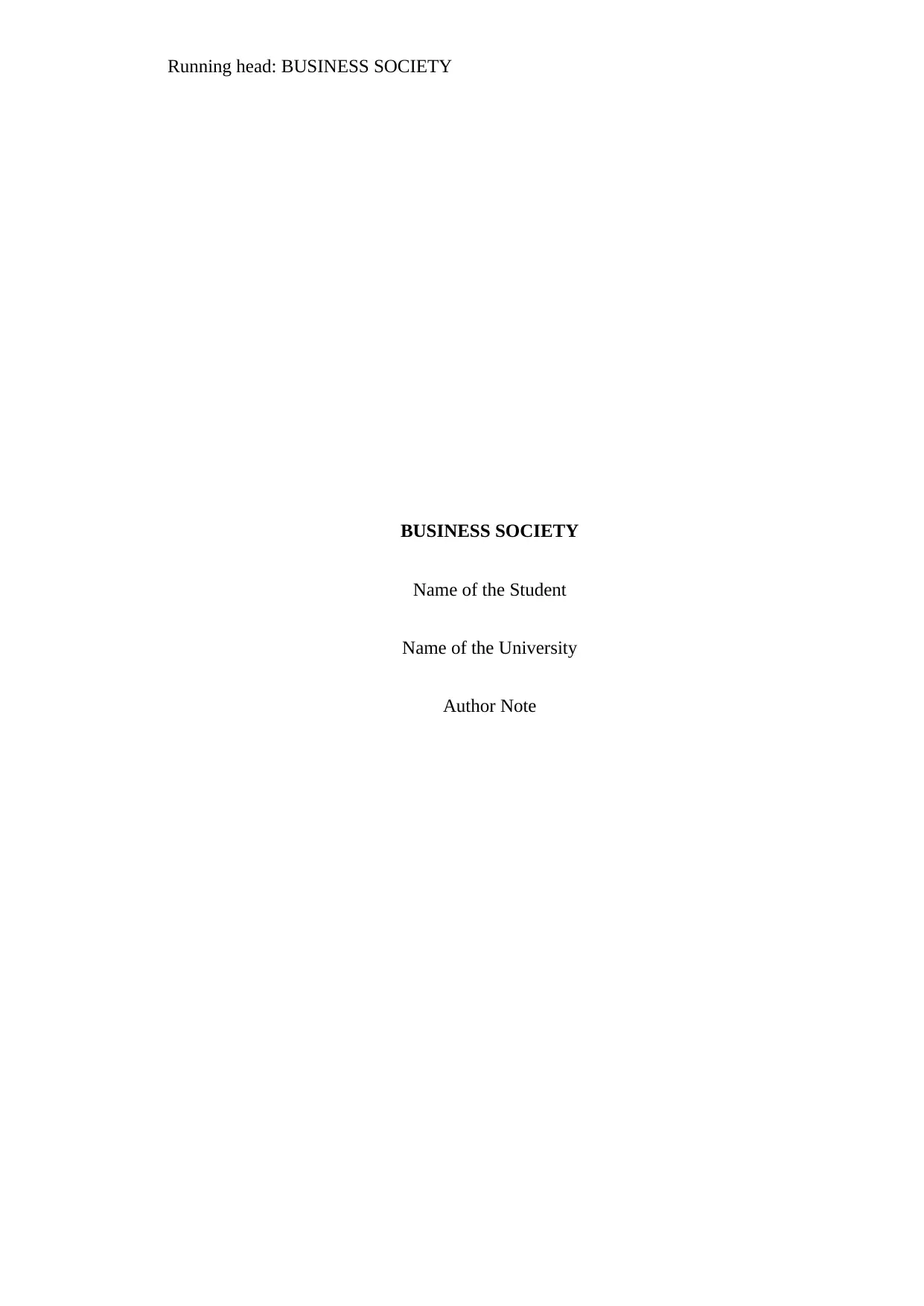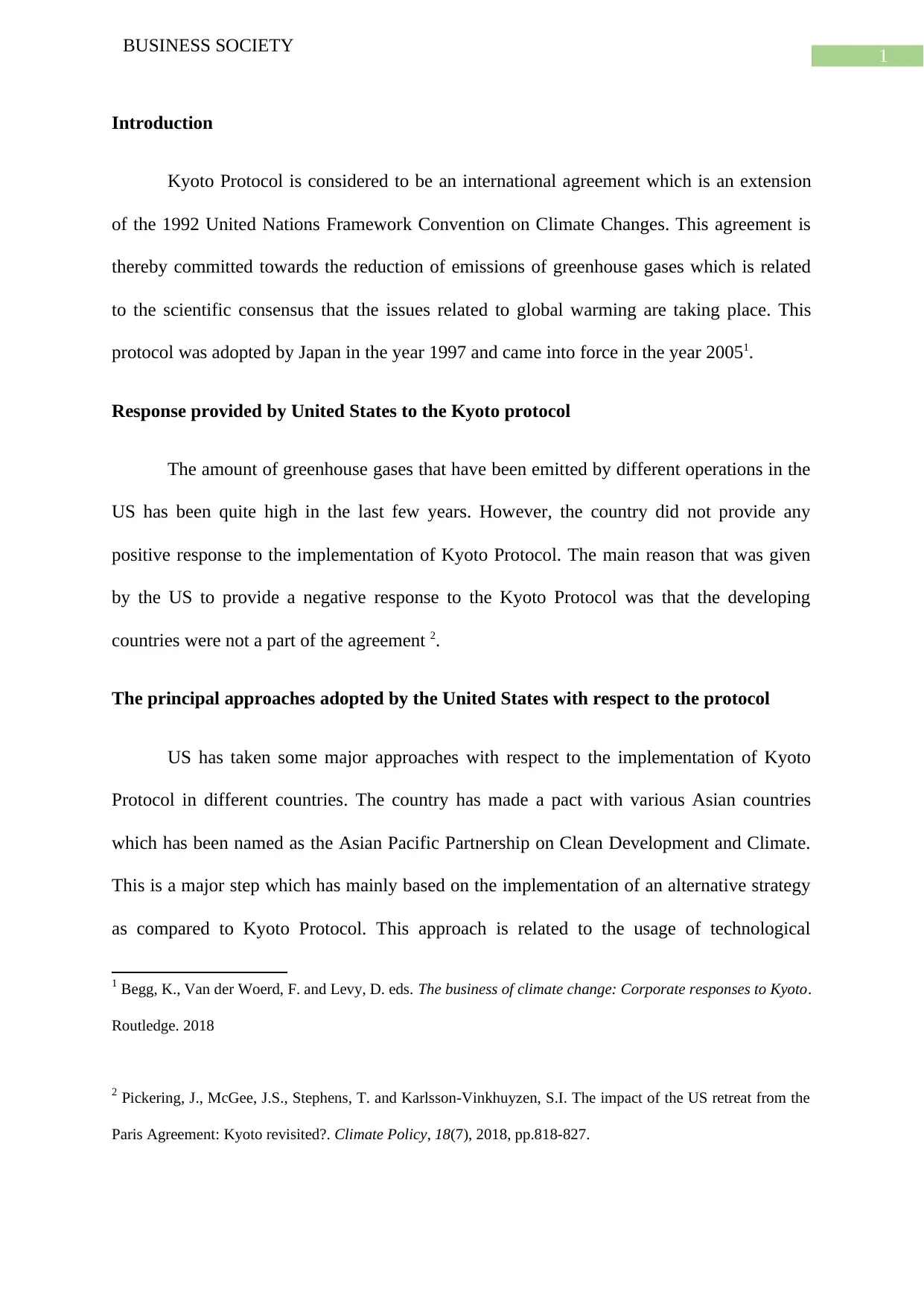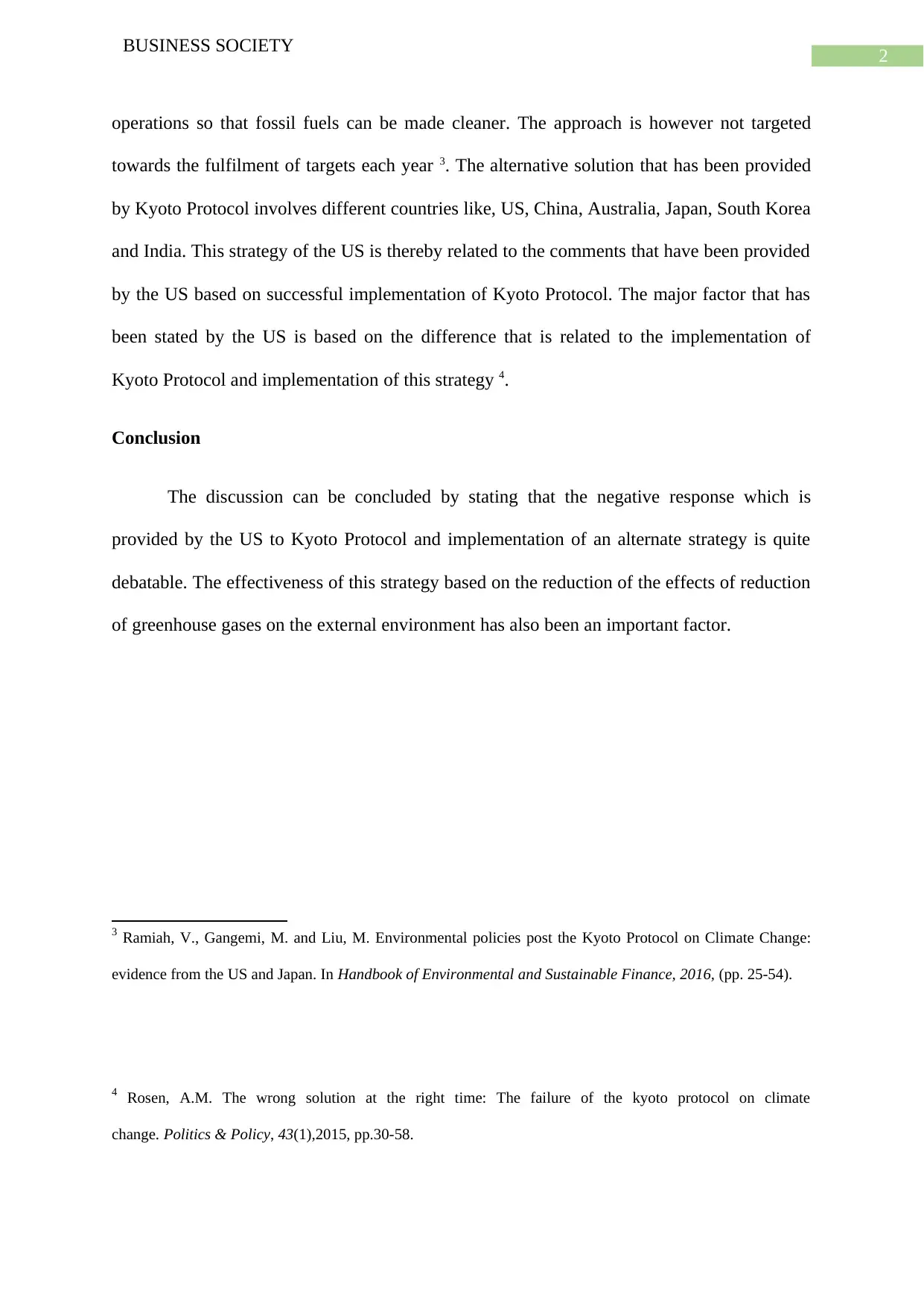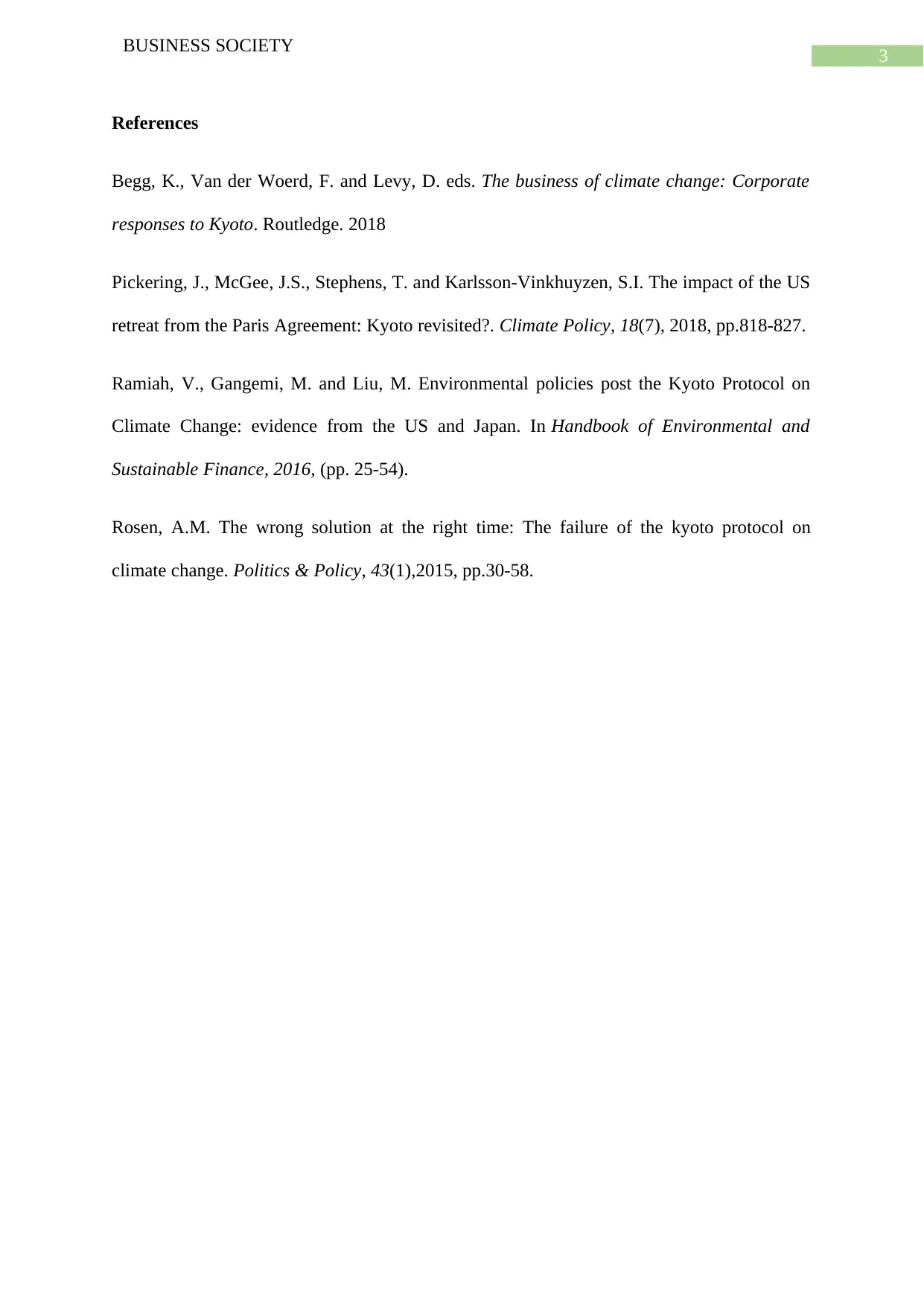Kyoto Protocol and US Strategies: A Business Perspective
VerifiedAdded on 2023/06/09
|4
|745
|137
Essay
AI Summary
This essay analyzes the United States' response to the Kyoto Protocol, an international agreement aimed at reducing greenhouse gas emissions. It begins by outlining the protocol's objectives and the US's initial negative response, primarily due to the exclusion of developing countries. The essay then explores the principal approaches adopted by the US, including the Asian Pacific Partnership on Clean Development and Climate, which focuses on technological solutions for cleaner fossil fuels rather than meeting specific annual targets. The discussion further examines the alternative strategies implemented by the US, involving countries like China, Australia, and India. The essay concludes by debating the effectiveness of the US's approach and the impact of these strategies on the reduction of greenhouse gas emissions. The provided references support the analysis of the US's stance and alternative solutions.
1 out of 4











![[object Object]](/_next/static/media/star-bottom.7253800d.svg)